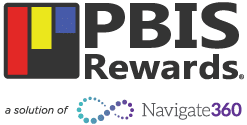If you want to foster a spirit of community, friendly competition, and school pride among your students, you can’t go wrong with setting up house groups in your school. House groups in schools are a fun, positive way to build stronger relationships among students, faculty, and staff. By setting up houses that include students from all grade levels, you enable students and staff to make investments in each other and share powerful moments together. House groups in schools also:
- Make large schools feel smaller
- Create stronger peer connections
- Cultivate a sense of belonging
- Improve school culture and climate
- Enable organic character education
- Foster faculty, staff, and student ownership
- Promote positive relationships
- Instill a sense of school pride
- Help reduce behavior issues
- Increase academic achievement
When you consider the benefits of house groups in schools, you can understand why so many schools chose to make them a part of their school culture.
House Groups Best Practices
For house groups to be successful, however, you need to establish them using best practices. These best practices will enable you to get the most from your house group system, regardless of your school’s grade level structure.
Why
- Be clear about your Why. Why is your school implementing house groups? Clearly communicate this Why to all members of the school community.
- Character education is an important aspect of positive school culture. Use house groups to reinforce school-wide expectations as part of character education.
How
- Keep house groups student-centered and student friendly.
- Use the groups to foster positive student-to-student and staff-to-student relationships.
- Involve students in all aspects of the house groups implementation. They can even help name the groups.
- Consider rolling out the house groups system at the beginning of the school year or semester. Houses can be a part of a fresh start and can generate a lot of excitement.
- Roll out the house groups system and reveal group assignments through a fun assembly.
- Establish faculty and staff membership in houses before you assign students. Staff members who are already excited about houses and their role as house leaders will help encourage excitement among students.
- Randomly select the students from each grade level for each group. House groups build greater excitement, engagement, collaboration, and mentoring when the groups are a mix of students from different grades and backgrounds
Administration
- Create a house groups committee to help with planning, implementation, and management of the house groups system. Make sure there is representation from all community members including admin, staff, students, and families.
- Generate excitement by creating a leader board in one of your school’s common areas. Keep this board updated regularly to foster friendly competition between houses.
Funding
- Families and your parent-teacher association (PTA) can be powerful allies. Partner with your PTA to purchase shirts for each house group, host fundraisers, and even plan events such as a “House Olympics.”
- Have funding set aside especially for house groups prizes/acknowledgements.
Activities
- Encourage the groups to collectively create house cheers or chants. They can also design their own symbols, flags, banners, or t-shirts.
- Have house groups partner with other community organizations to oversee certain community projects or services.
Celebrations
- Highlight each house randomly throughout the year. Encourage other groups to support that house by wearing that group’s colors on a specific day. Have that group share ways to live out house expectations during morning announcements.
- Each month, recognize the house with the most points. This can be something as simple as a free dress day, homework pass, or special recognition such as a badge or sticker.
- The house with the most points at the end of the school year can be named the House Champion of the Year. Display their colors in the school office. You can even reward that house by allowing them to purchase something necessary and meaningful of their choice for the school.
Using PBIS Rewards with House Groups in Schools
If your school has implemented a PBIS initiative, house groups can be a simple addition to the framework. In fact, PBIS Rewards allows you to build and recognize house groups easily using our software. PBIS Rewards enables you to quickly sort students into houses and award points to each house all at once. This can be especially helpful at assemblies or house group competitions.
Including house groups in your PBIS initiative allows you to extend your behavior matrix a bit further. By defining what school values look like for houses, you can encourage students to further develop positive behaviors as part of a group.
With PBIS Rewards, you can set up and manage house groups and track house points within the system. We even provide a digital leaderboard that you can display in one of your school’s common areas. Simply generate a PBIS Rewards Points by House report and select “display” to share house points leaders with the whole school.
House groups in schools benefit everyone in the school. Older students can mentor younger ones, and younger students develop a sense of inclusion in the school community. Staff members also get a boost from the excitement and camaraderie that house groups create. We’d love to show you more about house groups within PBIS Rewards – contact us for more information!


